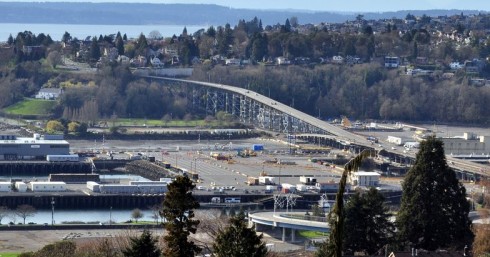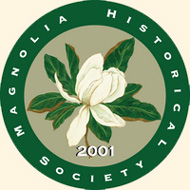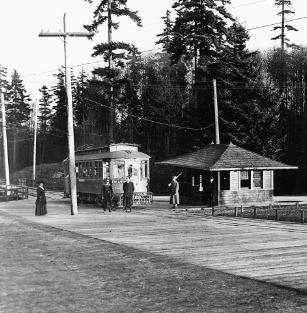By Monica Wooton
Then
Eighteen years ago this month, the “New Year’s Mudslide” damaged the Magnolia Bridge, closing it for four months. According to Joy Carpine-Cazzanti, as noted in “Critical Connection: Bridge to Bluff” in “Magnolia: Memories & Milestones”: “The 1997 New Year brought the most dramatic trouble the bridge had ever experienced. On Jan. 2, the backyards of six houses perched on the bluff, near the west end of the bridge,…slid…knocking out several reinforcing beams… The Seattle Times reported that approximately 20,000 cubic yards of earth moved off the bluff that day, enough to ‘fill Husky Stadium 12 feet deep.’”
Carpine-Cazzanti wrote that Frank Yanagimachi, the city project manager for the $5.2 million slide repairs, summed it up in a personal interview: “Part of that earth swept under the bridge between two support columns, taking some cross brace with it, before smashing into the [the Navy’s bachelor’s officers house]. More earth came to rest against one of the bridge’s footings…. If that footing had moved the section of the bridge that it supported, it could have collapsed.
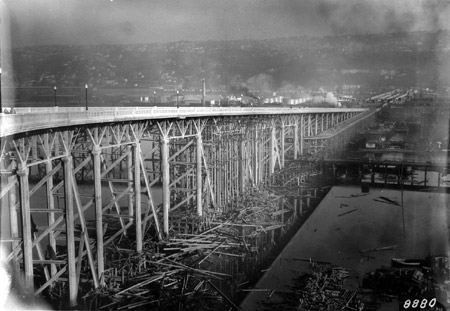
Photo of the Garfield Street Bridge (now called The Magnolia Bridge) being built. 1930. Seattle Engineering Department.
“Officials closed the bridge…leaving only West Emerson Street and West Dravus Street to serve the 17,000 vehicles that used the Magnolia Bridge each day…. A paramedic was stationed in now-isolated Magnolia to respond quickly to any medical emergencies,” she continued.
Carpine-Cazzanti says supports that were …felled by the slide were part of a rehab project on the Bridge: “…By 1959, [the bridge] was showing definite signs of wear. City inspection found: …an uneven deck surface, exposed reinforcing steel, spalled and/or separated concrete, pronounced surface cracking, loss of support to suspended spans and an undulating movement of the bridge deck. “The Seattle City Council passed an ordinance on Aug. 10, 1959, to provide $825,000 to rehabilitate the aging bridge, and extensive underbracing was done.”
In February 1999, a slide above the west-end …on-ramp of the bridge caused another two-month closure to stabilize the Queen Anne hillside above it, which had a history of serious sliding as far back as 1915.
The 2001 Nisqually earthquake damaged the bridge again, according to King County Department of Transportation: “Repairs after the 2001 earthquake included replacement of column bracing at 27 of the 81 bridge supports. Although the bridge is currently safe for motorists to use, it is vulnerable to severe damage in another seismic event. Continued deterioration has weakened the structure.”
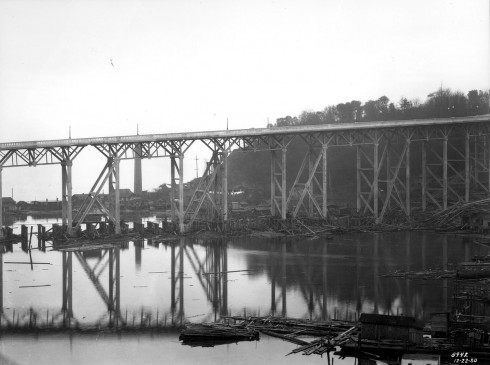
Photo of the Garfield Street Bridge (now called The Magnolia Bridge) being built. 1930. Seattle Engineering Department.
These events brought to light a series of questions regarding the safety and future of the Magnolia Bridge. According to the Seattle Department of Transportation (SDOT) website, a process to identify the best Magnolia Bridge replacement alternative began in October 2002. After four years of study and community input, in November 2006, SDOT selected a new bridge structure and path.
The SDOT website says: “The project is put on hold until appropriate funds have been obtained in order fully fund the final design and the construction work. SDOT continues to pursue a blend of funding sources in order to complete the final design…There is no timeline identified at this time regarding when the necessary funds will be secured. Estimated project cost as of 2007 was $262 million.”
In January 2014, KOMO-TV ran a story by Luke Duecy, saying, “One year after Seattle’s Department of Transportation listed the Magnolia Bridge third on its [sufficiency rating] priority list, the city still doesn’t have plans to tear it down and build a new bridge.”
Now
“One method of prioritizing bridges for replacement/rehabilitation is the utilization of the bridge’s sufficiency rating (SR)… The Magnolia Bridge has a sufficiency rating of 16.78 out 100,” according to SDOT project manager Kit Loo.
SDOT Road Structures manager John Buswell says SRs are not always reliable a good thing to look at because “its major function is to prioritize bridges for federal funding.” and may not accurately “identify or it may misidentify bridges” as needing replacement.
He offers, “Because of the consequence of bridge structural deficiencies, bridge engineers manage bridge safety very conservatively. Our No. 1 and highest standard is public safety. Long before a bridge becomes unsafe, the bridge is either restricted from heavy loads or closed altogether. There is conservatism built into the analytical process that is called ‘load rating’…. The Magnolia Bridge is currently load-rated for legal loads only. No over-legal vehicles are permitted to use the Magnolia Bridge. The ramps that go down from the bridge to the Pier 91 gate are posted ‘no trucks allowed.’”
Buswell is responsible for calling for a new load rating on the Magnolia Bridge to be completed late this year. He believes it is time to look at the bridge, get the latest safety information and begin to get decision-makers thinking in terms of replacement.
He added, “The entire budget for Washington state for these types of projects is only $38 million a year…in contrast to what a bridge like this will cost” [hundreds of millions].
Buswell says, “Seismically retrofitting has not been done in the many repairs this bridge has experienced, and it would most probably not perform as well as West Dravus or West Emerson in an earthquake…. The City Council knows the Magnolia Bridge is an issue. It has been on the minds of city government for some time.”
Seattle City Council member Sally Bagshaw, who may run for reelection specifically representing Magnolia, Queen Anne and Belltown, comments: “The Magnolia Bridge serves as a primary connector… for commuters, buses, freight, businesses and residents. It is a major thoroughfare and, therefore, must be in good repair… for the thousands who cross the bridge every day… We must continue to monitor the safety of the structure… and coordinate with SDOT, WSDOT (Washington State Department of Transportation) and federal authorities to ensure the bridge is well maintained and funded at a level that guarantees the safety of our community.” She did not respond to a question relating to replacement of the bridge.
Janis Traven, a Magnolia resident who worked on the Design Advisory Group for six years, points out, “That was possible because Sen. Patty Murray got funds… This absolutely needs to be moved along… The original premise for the new bridge design in 2002 was, ‘This bridge needs to be replaced.’”
Traven contends, “The Magnolia Bridge remains one of the most structurally insufficient bridges in the city. Magnolians are still waiting to learn what the city and Port [of Seattle] have designated as a really viable emergency route in the event of a collapse. There is neither funding or a plan to fund the needed replacement nor provide a fourth access for Magnolia, which was part of the discussion.”

